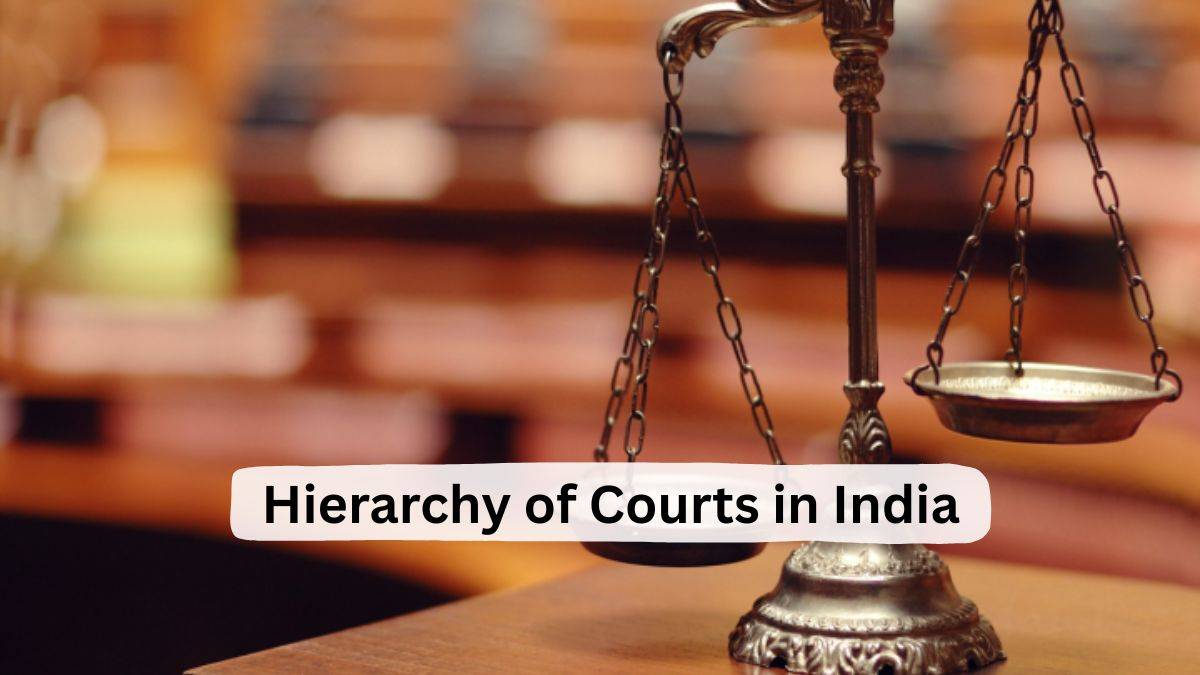Hierarchy of Courts in India: Structure, Functions for Indian Judiciary
To know the Hierarchy of Courts in India, go through the article below. The Indian courts are divided into three categories. Read the functions and activities conducted by these courts here.
To deal with the Justice System in India, various levels of courts are established. Each court has the power to deal with situations that happen at a distinct level. For your clarity, the Supreme Court comes at the end when the High Court and Lower Courts fail to resolve the issues.
The Judges at the Lower courts are recruited through the exam conducted by the state’s high court. The eligibility to become a lower court judge has undergone an amendment recently. According to which, lawyers must have three year of practicing experience and then they have to clear the exam conducted to analyse their capability to deal with the situations. However, the high court and supreme court judges are selected based on their experience level. To understand the role and functions of each court, go through the article below.
- Supreme Court in India
- High Courts in India
- Lower Courts in India
Supreme Court in India
Let us begin with understanding the role and functions of the Supreme Court in India. It was established in January 1950. It is the highest level court in India which was established under the Constitution of India. Its role is to protect the Justice system in India and the Indian Constitution as well.
- This is the appellate court and accepts the appeals which are already being heard in the high court of different state.
- This court also accepts the writ petitions filed against the violation of rights.
- This court has one Chief Justice of India and 30 other Judges to conduct the courts’ hearings.
Also Read:
- 5 famous Indian lawyers - Education, Salary, Popular Cases, Advice for Lawyers| Shiksha
- How to Become a Judge in India: Process, Eligibility, Complete Guide
High Courts in India
This the second highest court in India. These are situated in each state and works to protect the rights and maintain justice in their Jurisdiction. The decisions and orders of this court are bound by the Supreme Court’s judgments. There are around 24 high courts in India. The Kolkata High Court is the oldest court in India. The primary work of High court is to protect the regional juridical system in India. The appointment of High court Judges are executed by the President of India with the consultation of Chief Justice of India, Chief Justice of High Court, and Governor of the state.
- High courts govern the jurisdiction of Lower courts in India such as family, civil, and criminal courts in India.
- If lower courts are incapable of exercising their power, high courts comes into existence.
- This is also the appellate court and accepts the appeals which are already being heard in the lower courts of the region.
- The Company law cases are only heard in the high court of India.
Also Read: List of 25 NLUs in India 2025: NIRF Ranks 2025, Admission, Courses, Fees, Placements & Seats
Lower Courts in India
The Lower court in India are further divided into- District court and Village court. Each court has their separate powers depending upon the region their work is limited to. The state government and union territories decide the structure of Lowers courts in India. Its structure is based on-
- Population of the region
- Number of cases
These factors decide the number of courts to be established in the region. The judgement of these courts are subject to review of the appellate court.
The District Judges are appointed by the respective state government. The government also appoints the Additional district judge and assistant district judge to share the extra load on the court.
However, the Criminal courts are further divided into second class magistrate court, First Class Judicial Magistrate court, and Chief Judicial magistrate courts. Another type of Lower court is Village courts known as – Lok Adalat and Nyay Panchayat. These courts help to provide justice at the Village level.
Also Read: Kesavananda Bharati Case: Doctrine of Basic Structure, Facts, Judgement & Impact

